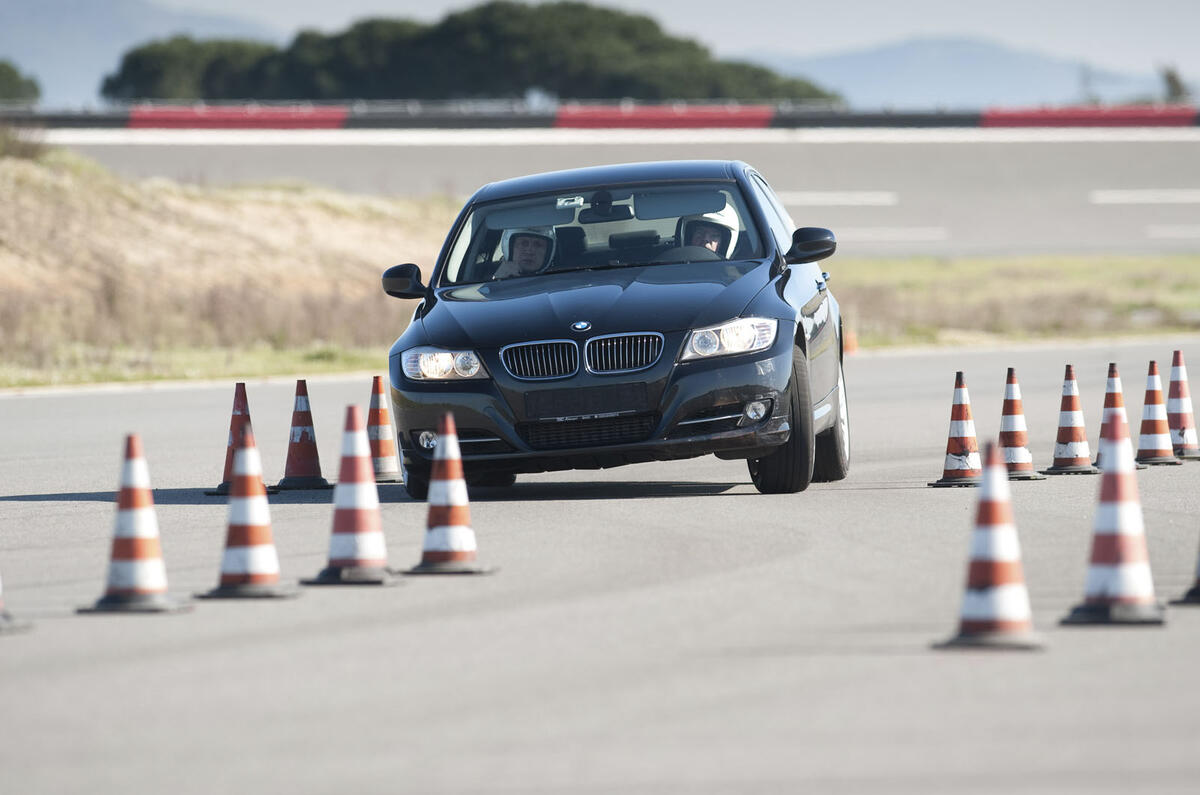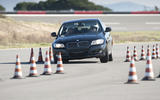Autocar recently visited one of Bridgestone's testing facilities to get a better understanding of how tyres are developed.
In particular we wanted to know how high performance tyres, such as the Potenza S001, are developed.
See the Bridgestone tyre testing pictures
Tyres may look like dull rubber circles, but there's a lot of science and technology within them, as a trip to Bridgestone's James Bond-like R&D facility near Rome reveals.
Here multiple test beds torture tyres to destruction. One of the test beds can spin a tyre up to 310mph, although it will only last at this speed for "a few minutes".
It takes 18 months to two years to develop a new tyre, says Bridgestone technology boss Franco Annunziato, much of that taken up with computer simulation and modelling. Once a prototype is produced it is tested on road and track, and then tweaked some more, with each iteration taking two to three weeks to produce.
The key, says Annunziato, is "translating the finding on the track into information for the engineers - and then being able to reproduce it in mass production".
Variables include the tyre construction, carcass material, shape, tread pattern, the rigidity with which the tread attaches to the carcass, the sidewall design, lateral and torsional stiffness, high-speed uniformity and bead strength. Changing one has consequences for the others.
Factors of consequence that must be included include drive-by noise, rolling resistance, comfort, road roar, stability, aquaplaning, winter performance and even weight - and all must be matched to the vehicle dynamics and philosophy of the car.
Our test driver is former F1 driver Stefano Modena, who climbs aboard a 302bhp BMW 335i to demonstrate three identical looking sets of tyres. One is an off-the-shelf set for road use, another a semi-handcrafted version of the same tyre and a third a first prototype set developed for another car.
The off-the-shelf set deliver a faint steering response delay, but on the road you'd hardly notice it. The second, bespoke set, delivers an impressive mix of fluency and precision. The third, early prototype set give the impression of driving a car with shot dampers.
It's an eye-opening series of runs around the test track, and the only conclusion to draw is that a high-performance tyre's creation is as complex as that of a car's engine management system.
Visit Autocar Tyres to find your perfect tyre at an affordable price - plus free fitting from a local fitter.
















Join the debate
Add your comment
Re: How tyres are developed
Yes I had Bridgestone Turanzas on a car once and it was all over the place, wet or dry with limited traction. When I swapped to Michelins it was like having a new and improved car.
Re: How tyres are developed
It's all lies, anyone who has experienced Brickstone RFTs knows they are designed, developed and tested by the tea lady........:-))
Re: How tyres are developed
I think Goodyear and Bridgestone are on the top of the list.
Lou
http://www.anonymizer.us.tc